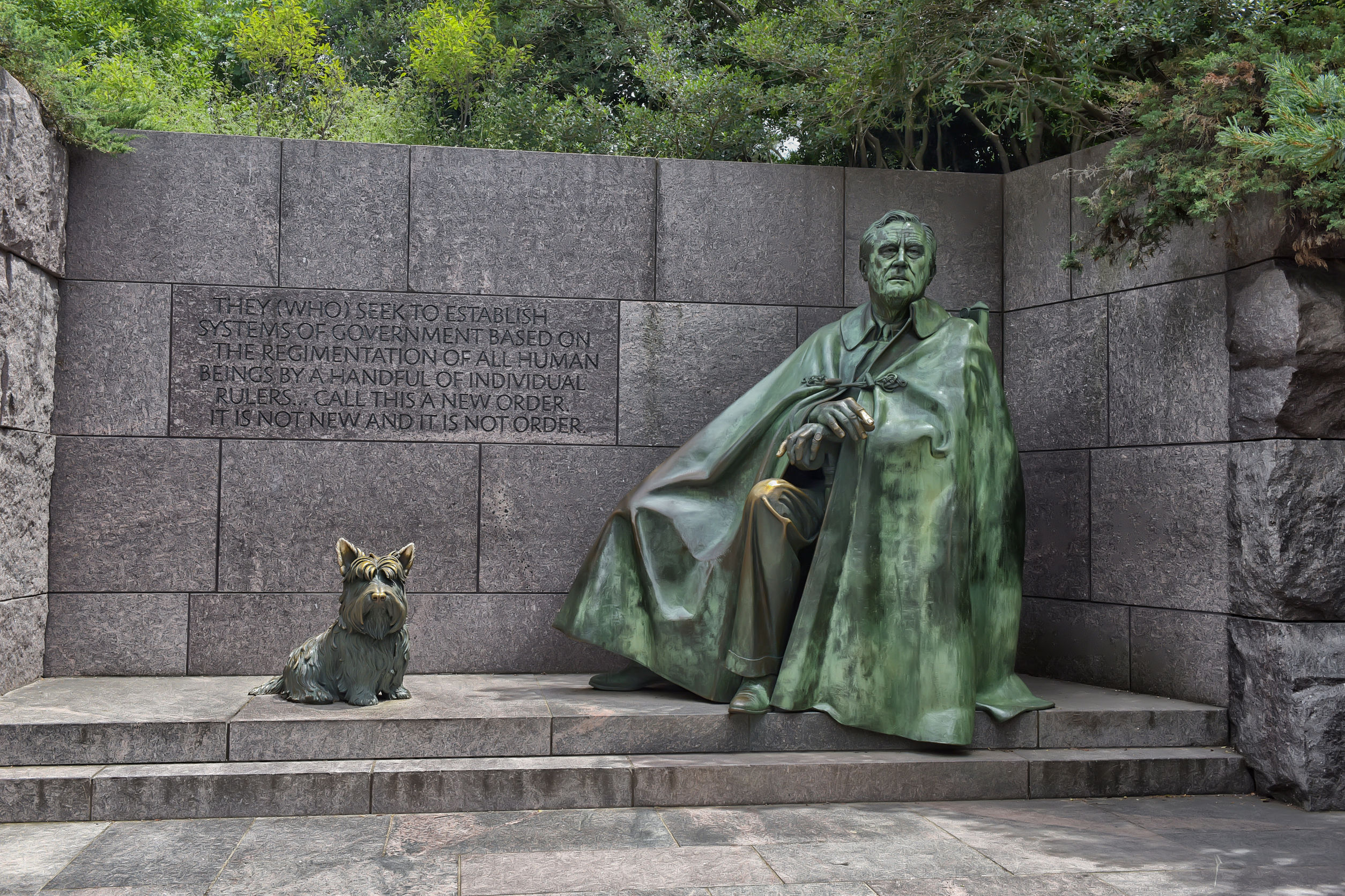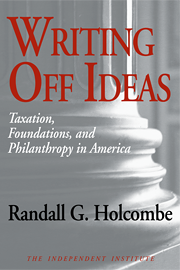Popular opinion holds that most of the credit (or blame) for the incredible growth of the federal government should go to President Franklin D. Roosevelt and his New Deal. While Roosevelt certainly was a willing participant in that process, the federal government began its amazingly rapid growth well before the New Deal, and it is unlikely that it would be much smaller today even had FDR never come along.
The origins of federal growth are in the Constitutional Convention. But the modern period of growth began with the Progressive Era before World War I. Contrary to popular belief, that growth continued through the 1920s. The percentage by which the federal government grew was greater during Herbert Hoover’s four years as president than during the first seven years of the New Deal. Roosevelt merely continued a long-standing trend.
The story of the growth of the federal government can be divided into two parts: before and after 1913, when the 16th amendment to the Constitution, which permitted a federal income tax, was ratified. In 1913 federal spending was a mere 2.5 percent of GNP (today spending is almost ten times that level); so if the federal government is measured only by spending, little growth took place before the income tax. Before 1913, however, the federal government grew in other ways, by enlarging its power and changing its mandate. When the colonies came together to form the United States, the founders viewed the new government as the defender of its citizens’ liberty. That meant protecting their rights-and in those days the most significant threat to the rights of individuals was, in nearly everyone’s eyes, the government itself. By 1913 the federal government had been transformed into an organization not to protect rights, but, ostensibly, to further the nation’s economic well-being.
The first part of our story, then, is how a government that began in 1776 as a protector of individual rights had by 1913 evolved into one that presumed to guarantee the economic welfare of its citizens. The second part of the story is how the federal government, armed with a powerful new source of revenue, began a continuous expansion that lasted throughout the twentieth century. One might be tempted to argue that the income tax was the cause of the federal government’s growth, but that answer would be simplistic for two reasons. First, it focuses on spending alone and ignores the growth of the federal government’s legal and regulatory power that began well before 1913. Second, it treats the income tax as something thrust on the nation rather than something chosen by its citizens. Constitutional amendments must have substantial popular support to gain the approval of two-thirds of both houses of Congress and three-quarters of the state legislatures. Americans wanted an income tax because they wanted more government, and they wanted more government because they believed it would enhance their economic well-being.
World War I was a period of enormous federal expansion, and the New Deal is likewise well known as a period of government growth. Yet the time in between, the 1920s, is often characterized as a time of retrenchment. In fact, the 1920s continued the growth that began in the Progressive Era and set the stage for the New Deal. Before getting into details, we need to place the decade in the context of the preceding history of the federal government.
Federal Growth from 1776 to 1920
The first major event in the growth of the federal government was the ratification of the Constitution in 1789. Before that, the United States was governed under the Articles of Confederation. The Constitution is frequently praised as a document that protects the rights of individuals and limits the powers of government. But a comparison of the Constitution with the Articles reveals that just the opposite is true. Under the Constitution the federal government gained more power, was less accountable, and had greater latitude to determine its own scope of action. That is what the Constitution was intended to accomplish.1
The Constitution established the Electoral College for the selection of presidents, but specified no method for choosing electors. Several methods were used, but in most states the legislatures picked them. The framers expected that in most elections no candidate would get a majority of electoral votes. That would permit the House of Representatives to name the president from the five top electoral vote getters. That system never worked as envisioned, and by 1828, with the election of Andrew Jackson, the current system of popular voting for electors had become firmly entrenched, and along with it the party system.2 From then on, successful candidates owed their success to the support of their parties, and in return used the political system to reward those who helped them get elected.
Undoubtedly the biggest event in the growth of the federal government was the Civil War, which established its supremacy over the states. The Civil War brought much new power to the federal government, and laid the groundwork for the growth of interest groups.3 The first interest group to systematically raid the Treasury for its own benefit was the war veterans. Originally, Union veterans were entitled to pensions only if they had been injured in battle; they had up to five years to claim them. In 1870 veterans pensions totaled $286 million in 1990 dollars and should have then declined. Instead they rose to $1,548 million by 1890, because the Republicans, who dominated the White House and looked to veterans for political support, increasingly liberalized the pension laws until every Union veteran of the Civil War qualified.4
While veterans were a model for future interest groups, the Treasury at that time had decidedly limited means. At any rate, other groups were more interested in regulatory benefits. The Interstate Commerce Commission was created in 1887, and the Sherman Antitrust Act passed in 1890.5 The transformation of the U.S. government continued as the turn of the century ushered in the Progressive Era. The Food and Drug Administration was created in 1906, the Federal Reserve in 1913, and the Federal Trade Commission in 1914. A government initially committed to protecting the liberty of its citizens now seemed to be just as firmly committed to looking out for their economic welfare.
The Progressive Era was interrupted by World War I, during which federal power advanced in unprecedented ways. The railroads were nationalized, waterborne shipping was regulated, and the United States Food Administration, created in 1917, controlled all aspects of the food industry, from agriculture to distribution to sales. Similar regulation was applied to fuels, and eventually to the whole economy.6 When the federal income tax was introduced in 1913, the highest tax bracket was 7 percent for all income above $20,000. Because of the demand for war-related spending, by 1918 the highest rate rose to 77 percent beginning at $4,000. This was the context in which Warren G. Harding was elected to the presidency in 1920 with the theme, a “return to normalcy.”
Harding, Coolidge, and Hoover
If one looks only at total federal spending, it appears that the Republican administrations of Harding and Coolidge are a period of retrenchment sandwiched between the big-spending Democratic administrations of Woodrow Wilson and FDR. The Hoover administration does not fit this view even when examined superficially, because the percentage increase in spending during those four years exceeded the growth in the first seven years of FDR’s New Deal, before World War II caused spending to skyrocket. Despite the conventional wisdom that big government began with FDR, a closer examination reveals that even the Harding and Coolidge administrations were periods of substantial government growth. It was masked, though, by the reduction in war-related spending following World War I.7 The 1920s, then, were actually a continuation of Progressive Era government expansion, which would last through the New Deal.
Contemporary political-party ideological stereotypes do not fit the pre-New Deal era. At the risk of some oversimplification, they should be reversed. The Republican party, the party of Lincoln, was the advocate of a strong federal government with increasing powers, while the Democratic party, which had most of its power in the South, advocated states’ rights and a smaller federal government. Moreover, Harding and Coolidge were not particularly strong presidents, and the Congress was dominated by Republicans with substantial Progressive leanings. For Harding and, after Harding’s death in 1923, Coolidge, a return to normalcy meant a return to the Progressive policies begun before the war. This was even more true of Hoover, who was an engineer by training and a firm believer in applying scientific principles of management to government. During the Wilson administration Hoover was the head of the U.S. Food Administration. He was secretary of commerce throughout the Harding and Coolidge years, before being elected president in 1928.
Federal Spending During the 1920s
Aggregate federal spending declined slightly during the 1920s, when measured in inflation-adjusted dollars per person. However, that slight decline is really a combination of two different underlying trends. In 1916, federal spending per person was $83.60. (All data are in 1990 dollars.) By 1919 it had risen 16-fold, to $1,329.77. By 1927, federal spending had fallen to its low point of the decade, $180.57. The huge decline from 1919 is accounted for by a reduction in war-related spending, but nonwar spending actually increased sharply. Note that spending in 1927 was well over double the prewar 1916 level.
A more detailed analysis reaches the same conclusion. The 1920s saw huge declines in federal military and transportation spending (because so much transportation was nationalized during World War I). When civilian spending programs are isolated, they show substantial growth. Throughout the 1920s the average annual growth rate of federal spending on commerce, overseen by Secretary Hoover, was 13 percent. Agricultural spending increased by more than 11 percent a year, and spending on labor interests grew more than 12 percent a year. Federal spending on education grew by more than 10 percent per year, as did spending on public improvements and the public domain. Among broad categories, the fastest growth was federal law enforcement, which averaged more than a 17 percent growth rate during the 1920s. Thus, one can see that civilian spending during the 1920s grew rapidly and that spending remained substantially higher than it ever had been before World War I. Measured by spending alone, the 1920s was a decade of major federal government growth.
Prohibition
Much of the rapid growth in the federal law-enforcement budget was due to the prohibition of alcohol, which began in 1920 with the passage of the 18th amendment and lasted until repeal by the 21st amendment in 1933. The Department of Justice enforced prohibition, along with the Customs Service, Coast Guard, and Bureau of Internal Revenue. The bureau participated because, while alcoholic beverages were illegal, nonbeverage alcohol was to be taxed. But even when illegal alcohol was discovered, as far as the Treasury Department was concerned, the reason it was illegal was that the taxes were not paid. From 1920 to 1930 bureau spending on enforcement regarding illegal alcohol rose from just over $2 million to more than $12 million, while revenues rose from just over $1 million to about $5.4 million. In no year during Prohibition did the bureau collect more than it spent on enforcement. Apparently, even the Bureau of Internal Revenue viewed the law on alcohol not as a method of generating revenue but rather of extending federal law enforcement. Prohibition is probably the most visible area in which the federal government attempted to increase its control over the behavior of Americans during the 1920s.
Federal Corporations
Early in its history, the United States incorporated the First and Second Banks of the United States. After the charter of the Second Bank expired in 1836, the federal government did not charter another corporation until 1904, when one was formed to construct the Panama Canal. Federally owned corporations proliferated during World War I, beginning with the Merchant Fleet Corporation in 1917. After the war, most of these federal corporations continued in business and lost huge sums of money. The War Finance Corporation, chartered in 1918 to help strategic industries borrow money, had its charter extended in 1921 to assist American business in general. The Federal Land Bank, Spruce Production Corporation, and Sugar Equalization Board were other federal corporations begun during the war that lived on.
These corporations provided a model for government growth that extended through the 1920s to the present day. In 1923, 12 federally owned banks were created by the Federal Agricultural Credits Act. In 1924 the Inland Waterways Corporation was established to operate vessels on the Mississippi River, and in 1929 the Federal Farm Board was established to finance agricultural price supports. Creation of those corporations was integral to the growth of the federal government during the 1920s, but their purpose was also significant. In each case they were established to help further the economic well-being of a particular group of Americans, reinforcing the federal government’s transition from a guardian of liberty to an organization designed to oversee the national economy.
Agriculture
The 1920s were a difficult decade for American agriculture, largely because the world market for farm products was increasingly competitive. As a result, the decade is sometimes viewed as having favored business over agriculture. But in fact, the federal government began a number of initiatives to further the economic interests of farmers. In 1921 Congress passed tariffs on farm imports, and in 1922 the Capper-Volstead Act exempted agricultural cooperatives from antitrust laws. The Agricultural Credits Act of 1923 made it easier for farmers to get credit from the Federal Farm Loan Board. In 1926 the Department of Agriculture established a Division of Co-operative Marketing. The Agricultural Marketing Act of 1929 created the Federal Farm Board and, as noted, began federal price supports for agricultural products.
Adjusting for inflation, federal spending on agriculture expanded from $17 million (1930 dollars) in 1920 to $49 million by 1930. Whether evaluated in terms of budgets or number of federal programs, the increased support for agriculture in the 1920s was substantial. The charge that the federal government slighted agricultural interests is incorrect.
Antitrust
An examination of federal spending gives some indication of the growth of government, but regulation, though harder to measure, also had a big impact. Beginning with the Sherman Act in 1890, the federal government tried to limit the economic power of business through antitrust laws. Before 1905 only 22 cases were brought under the Sherman Act. But antitrust enforcement picked up later in the decade, with 39 cases brought from 1905 to 1909. From 1910 to 1919, 134 cases were brought, indicating more vigorous enforcement. In the 1920s, the number declined slightly to 125 cases.
That decline is deceiving, however, because after the increased enforcement in the prior decade, businesses acted more cautiously. The scope of antitrust enforcement was broadened in the 1920s, and cases were brought against firms in unconcentrated industries for conduct that was not obviously in violation of the antitrust laws as previously enforced. Antitrust enforcement is another area in which the federal government increased its power-yet another reason to question the conventional wisdom that it was excessively probusiness in the 1920s.
Academic Influences
John Maynard Keynes, in a famous passage in his 1936 General Theory of Employment, Interest, and Money, remarked, “The ideas of economists and political philosophers, both when they are right and when they are wrong, are more powerful than is commonly understood. Indeed, the world is ruled by little else.” Intellectuals also pushed the federal government to broaden its scope in the 1920s. The ideas of Karl Marx were gaining credibility and moving governments into economic matters. Perhaps just as significant, although with less ideological content, were the concepts of scientific management that were gaining credibility throughout the United States. Civil Service reform had been initiated late in the 1800s to create a more professional federal work force, and there was increasing interest in applying the principles of scientific business management to government.
In 1920 the National Bureau of Economic Research was established in cooperation with government, private foundations, and academic institutions to better measure economic performance statistically so that government could apply those principles to the economy. Secretary Hoover was a strong supporter of that effort. Indeed, many of the tenets of Keynesian economics that gained prominence during the 1930s were already part of the conventional wisdom of American economists in the 1920s.8 The alliance of academic institutions, private foundations, and government in the 1920s was yet another aspect of the growth of the federal government during the decade.
Conclusion
The New Deal is often seen as the pivotal event in the growth of America’s twentieth-century Leviathan. But the federal government has grown since its inception. The most important event in the history of federal government growth was undoubtedly the Civil War. Then, supported by the popular demand for more government involvement in the economy, the ideological foundation of the massive growth in federal spending was laid during the Progressive Era at the beginning of the twentieth century. The federal income tax made that growth in spending possible.
That the federal government grew during FDR’s presidency is undeniable. But Wilson and Lincoln had already set precedents for increases in government power in wartime. Thus, the main factors underlying the growth in government were firmly in place well before the New Deal.
Notes:
1. See Randall G. Holcombe, “Constitutions as Constraints: A Case Study of Three American Constitutions,” Constitutional Political Economy, vol. 2, no. 2 (Fall 1991): 303-328.
2. See Forrest McDonald, The American Presidency (Lawrence, Kan.: University Press of Kansas, 1994), for a thorough history of the evolution of the office.
3. For an excellent history of the Civil War following this theme, see Jeffrey Rogers Hummel, Emancipating Slaves, Enslaving Free Men: A History of the American Civil War (Chicago: Open Court Press, 1996).
4. A good reference on the subject is Theda Skocpol, Protecting Soldiers and Mothers: The Political Origins of Social Policy in the United States (Cambridge, Mass.: Belknap, 1992).
5. In Terry L. Anderson and Peter J. Hill, The Birth of a Transfer Society (Stanford, Cal.: Hoover Institution Press, 1980), the origin of big government is the Supreme Court’s Munn v. Illinois case, which allowed the state regulation of grain elevator rates.
6. An excellent study of the growth of the federal government during the twentieth century, including the effects of World War I, is Robert Higgs, Crisis and Leviathan: Critical Episodes in the Growth of American Government (New York: Oxford University Press, 1987).
7. A more detailed exposition of this material appears in Randall G. Holcombe, “The Growth o the Federal Government in the 1920s,” Cato Journal, vol. 16, no. 2 (Fall 1996), pp. 175-199.
8. See J. Ronnie Davis, The New Economics and the Old Economists (Ames, Iowa: Iowa State University Press, 1971).














